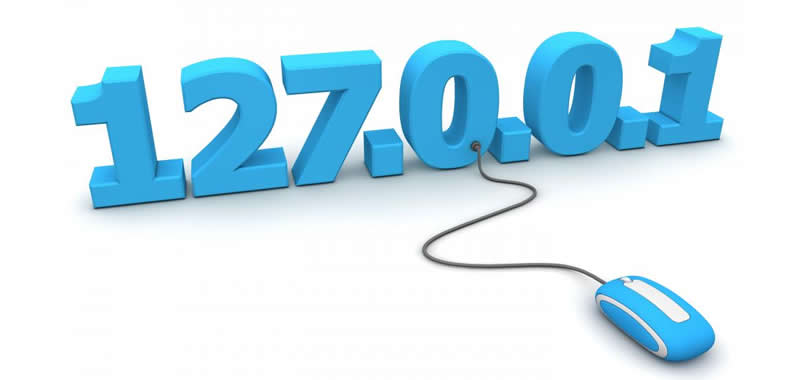IP Protocols and technologies for Internet connection
When a computer connects to the Internet, the communication protocol assigns it an Internet IP address to find machines and Web resources.

To ensure the exchange of information on a network with millions of connected computers, an unique way to identify each computer is essential.
Without a certain form of direction, you can’t establish links between computers, resources and systems.
The sequence of numbers that identifies a computer on the Internet is called IP address (Internet Protocol), and any packets of digital information in circulation (emails, web pages) contains the IP address of the source and destination computers.
The sequence consists of four numbers (between 0 to 255) separated by periods. An example IP address can be 66.34.237.94. The numbers corresponding to a country, a specific domain and the machine itself.
When any computer connects to the Internet, the communication protocol dynamically assigns a temporary IP address. Most Internet users do not know their IP address, nor use this number to find resources and machines.
It’s not really neccesary, it would be difficult to have to control these sequences of numbers. For this reason it is usual that an IP address is assigned with a unique name called Internet domain name.
The domain name is much easier to relate to a specific computer.
The correspondence between IP and the domain name is stored on computers that are constantly updated called DNS (Domain Name Serves) or Domain Name Servers.
These computers are distributed worldwide and are always online.
The domain name identifies the country by the letters at the end, for example .it is for Spain, .cu for Cuba, .ar for Argentina and .mx for Mexico.
NOTE:
In the United States there are three letters that reflects the theme offered by each site. For example .com for commercial entities, .int for international organizations, .edu for education, .net for the Internet and networks and .gov for government issues. Some servers include their own subdomain names that are decided by their local network administrators.
We have said that anyone can obtain their own domain name to use it personally or for a legally established company.
When a website is created and a domain name is reserved, this name is registered in the database of a domain name server. Once recorded is preferentially reserved.
If you decide to change server where your website is hosted the IP number will change but the domain name can and must still be the same.
In this case, the IP number pointing to your domain name will change, but this last one remains without prejudice to your clients.
Connection technologies
The world has increased their Internet use by increasing the connection speed and the reduction of costs. The first connections were made via modem with limited access speed.
When the modem connection at 56 kb/s was standardized the cost of calls was still high.
The rise of the flat fee, with unlimited Internet access monthly fee, was an important step forward for users.
Remember that sound when you connected to the Internet via Dial Up?
In this context, more ISDN (Integrated Services for Digital Network) lines used by companies that offered services using switchboards separating vox and data emerged.
The arrival of ADSL (Asymmetric digital subscriber line) was the definitive consolidation of the network.
This type of connections, and the liberalization of the sector positively influenced the fall in prices causing massive responses from new users.
Nowadays the companies responsible for providing access to the Internet have a strong competitive battle and the prices are within reach of most people.
Providers now offer a combined service network access with flat rate calls and digital television.
NOTE:
The usual speed connection offered by leading providers is 5Mb, although there are connections between 20 and 50 Mb or higher; in any way the actual navigation speed depends on the Access Node.
PCs connect to your ISP using one of the following ways:
- Dial-Up: It is the cheapest form of access. In this connection it is essential to have an internal or external modem connected to the computer and to the telephone network simultaniously in order to call to the ISP node. An access server and the TCP / IP allow to establish a modem-to-modem link. This is the slowest of all connections and now is being replaced by access through ADSL lines. Many providers have deals so that users with conventional connections change to new ones
- ISDN (Integrated Services for Digital Network): This network proceeds from the telephone network evolution that by offering digital connections from end-to-end allows to integrate a wide range of services, regardless of the terminal that generates it. This type of connection was more successful at an enterprise level. The main problem is that it denies transmission through voice lines. It needs a special device instalation. The connection is made via an ISDN modem connected to this device that delivers data to a digital cable, especially for these services
- DSL (Digital Subscriber Line): It is aterm used to referglobally toall technologiesthat provide a digital connection over a local susbcriber line telephone network. That is, works through conventional telephone lines, and allows hiring connection services without performing other installations. It uses the twisted pair copper wires of conventional telephone lines to transmit data at high speed broadband connection.The difference between ADSL and other DSL is that the download speed (the information received by the user) and upload speed (the information transmitted) are not symmetrical. Normally a faster download than upload speed is allowed.It is the most used Internet connection today. Its primacy lies in the convenience offered to the parties involved
The main problem with this model of access has to do with businesses with telephone exchanges, which require a change to ensure compatibility, a costly process without question.
However, few people doubt using ADSL nowadays and the number of users interested in hiring this connection mode is increasing.
To connect to the Internet using a DSL line a modem or a specific router that most providers offer for free is needed.
A router instead of a modem is preferred mainly because it allows to connecta multiple computer network.
NOTE:
ADSL is a broadband technology, which means it has the capacity to transmit data and operates at much higher speeds than the conventional telephone line.
- Cable: The cable is a high-speed access to the Internet. It uses fiber optic cabling lines. Speeds above light are guaranteed with the television cables. These connections are theoretically available wherever there is a cable television, they are completely independent from the usual telephone connections and therefore, from telephone lines. Internet connections are made with RG-6 or RG59 cables that are connected to a cable modem on the computer. The fiber optic cables are used to send information over long distances quickly and with very high quality.The coating, besides protecting the conducting wire itself, also prevents light scattering and with that the signal loss. This connection is basically used in packages that include an extensive television offer and deals in calling.The only problem is availability. Having to use a proper installation for its operation limits its use
- LAN (Local Area Network):A local network is the interconnection of several computers and peripherals. Its wider application is to share resources and exchange data and applications. In short, allows two or more machines to communicate.Most businesses that connect a local area network with an Internet provider ISP, do so using Network + Interfaces. For a LAN connection to the Internet you need to add a second NIC or a modem to one computer and then configure the computer as the default connection
- Mains electricity:These provide access to the Internet via the mains. It is a modality that is in development
- Wireless:In this connection a physical propagation medium is not used, is the modulation of electromagnetic waves. These waves propagate through space without a physical medium to provide each of the ends of the transmission.There are several Internet providers that offer free wireless routers. This connection model allows simultaneous connections without cables
- Satellite:A satellite is used as a communication medium , a system highly recommended for those places where there is no cable or telephone access. In a city it constitutes an alternative system users to avoid traffic jams because of the saturation of conventional lines and limited bandwidth. To connect to the network via satellite, reception data cards are required
Modems
As computers evolved, it became apparent there was a problem when transmitting signals.
While traditional telephone lines used analog signals, computers used digital signals.
The creation dial-up networking required a team that became the digital data into analog and vice versa.
The modem solved this problem. The word modem derives from its function as a modulator.
The modem receives the digital information of the computer and converts it to analog, to send through the telephone line and vice versa.
A modem can be internal or external to the computer. In addition to receiving and transmitting information, they are also responsible of wait for the beep tone, dial, hang up and attend calls.
The modems operate with the same communication standard. When a modem transmits information, adjusts its speed of data transmission, modulation type and correction and compression errors to the receiving modem.
When a modem transmits tones it is said it modulates and converts the binary digital signal from the computer in such tones, representing or carrying bits.
NOTE:
The modem is a device that converts digital computer signals into modulated analog signals to be transmitted through the telephone network. Digital information is a sequence of "ones" and "zeros" resulting from small pulses of electric current.
WIRELESS TECHNOLOGIES
Just over 100 years ago, an Italian physicist and inventor named Guglielmo Marconi was the first person who managed to successfully transmit radio waves and the world has never been the same since.
Today wireless technology allows users to use the Internet from anywhere, as long as you have the appropriate technology by using a laptop, PDA or mobile phone.
Now that is fashionable to talk about the Internet as the driving force that determines the way we live and work, we must remember that wireless technology is able to send information to thousands of kilometers invisibly through the air.
Without wireless transmissions mass media by emission wouldn’t exist. There would be no radio, no TV, no instant communications via satellite.
The world has become global, largely thanks to wireless technology; in fact, in many of the poorest countries on earth it is easier to communicate using mobile phones than fixed phones because of the huge costs involved in laying cables over long distances.
All wireless transmissions, whether it be the Morse Code from the Marconi era or existing digital data, are able to carry information through invisible waves.
The waves are part of the electromagnetic spectrum: the energy waves including visible light, X-rays, ultraviolet light, microwaves and many other types of waves.
The part of the electromagnetic spectrum that can be used to transmit information is called Radio Frequency (RF).
RF is used to transmit all types of data not only radio emissions, so the term should not be confused. The information carried on the radio waves can be of any type, anything from voice to television signals or computer data.
The information is transported through the airwaves using a device called modulator. Then it is transmitted through the air.
Sometimes it is sent to a device that is centimeters from the transmitter; sometimes it is issued to a wide audience that is hundreds or thousands of kilometers away.
In any case, when it reaches its destination, the information is obtained from the wave through an extraction process.
That information modulation processin a wave, the wave transmission, reception and extraction of information from this wave is the fundamental part of the wireless technology.
When it does something as simple as changing channels on your TV or performs a slightly more complex task like sending and receiving e-mail on your mobile, be aware that you are using a technology that is over a hundred years old, so current and relevant as any recent technology.
NOTE:
The wireless network is a technological, open and constantly growing border.
Wireless technology involves the disappearance of cables forming part of the computer networks today. Avoid wiring complications. The initiative in the field of wireless technology is starting a new battle against time.
Compared to the Internet, which the main advantage is that the information is available at any time, mobile wireless technology allows such availability to be found from everywhere.
When using the Internet, you are connected directly with the information provided as long as you are connected to the network, but if you are not connected, you don’t have access to the information.
The problem is that in today's world, users are constantly moving and can not be permanently connected to the Internet in one place.
Types of wireless networks
The most common wireless networks are:
WLAN (Wireless Local Area Network):It is a network in which a number of devices communicate with each other in limited geographical areas without using cables.
Its main limitation is its limited reach. A WLAN has a maximum range of 90 m.
The key element that configure this network is the access point (AP), a small telecommunications device that operates by radio frequency and connects the various computers that form the network.
The AP has a small antenna that sends data to other computers through the waves, creating a coverage area around it, through which users can connect. Then there are the computers of each user, which may be conventional, laptops, PDAs, etc.
The simplicity of the technology and the low cost has made households and many places of public Internet access such as airports, hotels, cafes and other places wireless technology adopted.
WiFi technology: The key to the growth of wireless Internet access is the wireless technology, which combines a number of related wireless technologies.
WiFi is a set of standards for wireless networks.
WiFi is the trademark of the WiFi Alliance, the trade association that tests and certifies that all equipment complies with IEEE 802.11x standards.
The IEEE is the institution that is responsible for regulateand organize all electronic devices, while the number after (802.11b), is like the last name of each standard.
It’s about an emerging standard that enables hardware companies manufacture wireless products that can communicate with each other.
Web pages and telephone calls are sent via radio waves, making the use of expensive cablesunnecessary and offers a high-speed Internet, which reaches a spectrum ranging from 2Mbps up to a theoretical maximum of 150Mbps.
WiFi’s utility is both domestic and business.
For home users, going to wireless means to share an Internet connection among multiple computers without need of connect them through cables.
To make this technology work you should have access to broadband Internet like ASDL and install a computer with a WiFi device, a wireless network card that, in turn, passes by the central device at anytime.
WiFi devices also allow connection via cable, using traditional Etherner cards.
The heart of a home wireless infrastructure consists of a device that is physically connected to the Internet and then disseminates the Internet access to the rest of the house, up to a distance of about 90 m.
It works similarly in a company, the WiFi technology allows a flexible working environment facilitating the exchange of jobs the company.
Likewise, those who are in a hotel or an airport can Access to email while waiting for their flight.
Speed is no longer a challenge in wireless connections and now is possible to transfer large files between computers and surf at impressive speeds.
Setting up a wireless network at home or in the company offers the freedom to go from one side to another without the need of cables for Internet browsing.
Today most of these networks are unprotected and vulnerable to hackers who can steal data, introduce viruses, include advertising or attack computers.
To avoid interference, all access points allow to create an unique name, called the SSID or Service Set Identifier to the WiFi network.
This identifier must be combined with regularity.
Another form of protection is to create the equivalent of a guest list for the WiFi network. In the configuration of an access point, users can specify which machines can connect to the network.
In a network language, this is known as MAC (Media Access Control). Of course, most WiFi products have long relied on systems of encryption called wired.
Equivalent Privacy (WEP - Wired Equivalent Privacy) to make the transmitted data unrecognizablebetween access points and computers equipped with wireless. Follow this protocol is not easy and requires some practice.
The use of WiFi technology has been consolidated and already been standardized. It has many users and many manufacturers sell such products.
WiFi technology will continue to grow at a rapid pace thanks to the increased speed and remote operation.
WPAN (Wireless Personal Area Network): A wireless personal area network with a coverage area of approximately 10 meters around the user, wherever it is located.
It is used for all next-generation devices that allow mobile communications, laptops, cell phones, PDAs, MP3 players and others.
There is a regulatory body, the IEES, which is responsible for making standards to provide security and stability to the WPAN.
The priority standard is the 802.15
Within WPAN, Bluetooth technology is highlighted, known by almost all mobile phone users, a wireless radio technology for low-cost networks using a single chip to put portable devices communicating.
Has a limited range of about 10 meters typically in small devices such as mobile phones, but other small equipment like laptops with more powerful transmission can reach 100 meters.
Safety is also an issue for users of this technology. Hackers can cause problems exploiting the system, configuration and programming flaws.
The most sensitive are the mobile phones and PDA’s. The most common piracy practices are:
Bluejacking: In computer security, the term refers to the technology to send unwanted messages between Bluetooth devices.
The name comes from a man named Jack who was on a boat looking for other Bluetooth devices. He found a Nokia 7650 and sent him a message saying "Buy Ericsson".
He called it bluejacking and it is known like that ever since.
The bluejacker doesn’t intercepts anything, only uses a feature on your device and the receiver. Both parties maintain full control over your device, and bluejacker can not do anything, not even see the personal information it contains.
Bluejacker usually only sends a text message, although in the most recent phone models can also send images and sound.
Actually, the pirate is not sending a message to another phone, but your device, being in a Bluetooth network, detects other devices, locates and adds them to your contact list, placing the message instead of the name of the person on the agenda.
Bluesnarf: This attack is based on extracting files from a Bluetooth mobile phone via Object Push Profile (OBEX Object Push) without the owner’s authorization.
Bluesnarf vulnerability is based on the incorrect implementation in the first models of Bluetooth Object Push Profile mobile phones, which lacked mechanisms for authentication and authorization, and allowed to download the contact agenda stored in the terminal in telecom/bp.vcf or the appointment calendar stored in telecom/cal.vs. This vulnerability is already corrected.
WMAN (Wireless Wide Area Network): These are long-range wireless networks based on microwave telephony to connect, at the same tine, to other LANs.
These antennas have generated much controversy because of its potential danger and unsightly presence, although many neighboring communities accept the installation because of how interesting the gratification is to the Community accounts.
Multimedia resources:
Internet Connection sound
While traditional telephone line sused analog signals,computers used digital signals.
CITE ARTICLE
For homework, research, thesis, books, magazines, blogs or academic articles
APA Format Reference:
Delgado, Hugo. (2019).
IP Protocols and technologies for Internet connection.
Retrieved Nov 23, 2025, from
https://disenowebakus.net/en/ip-internet-protocol






